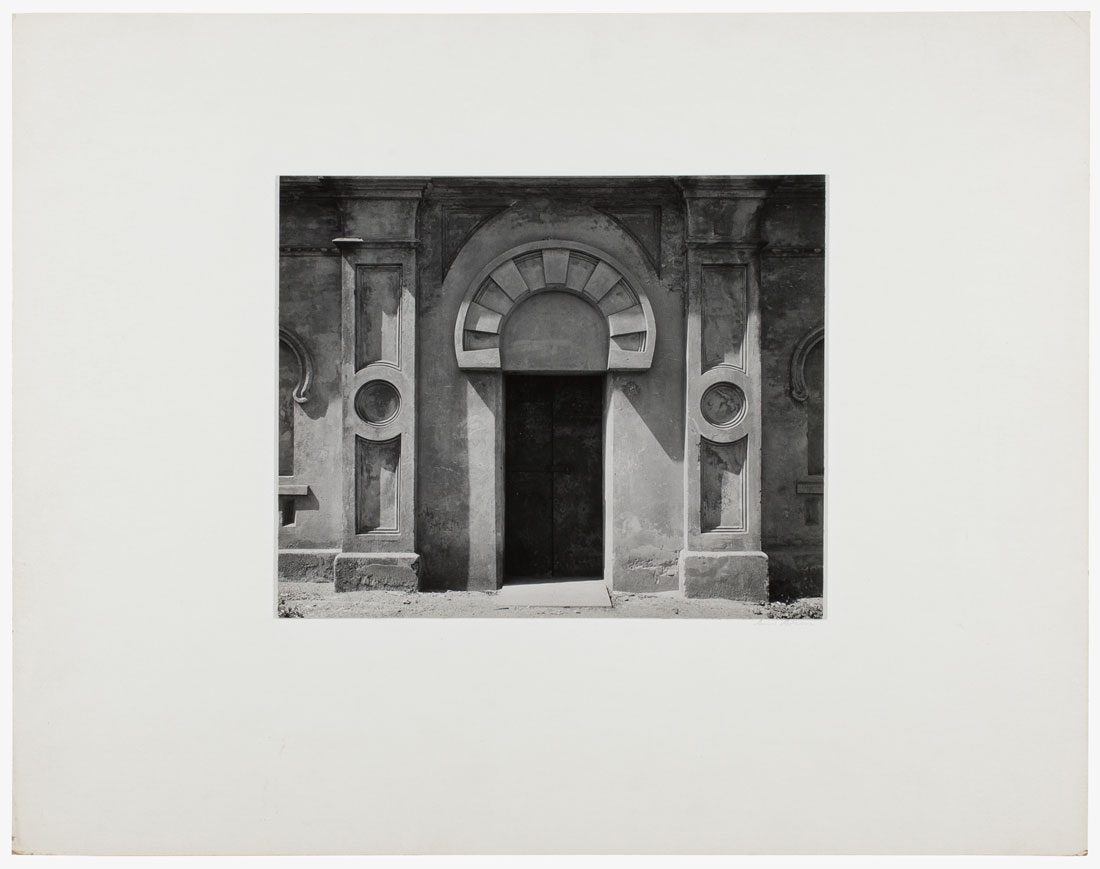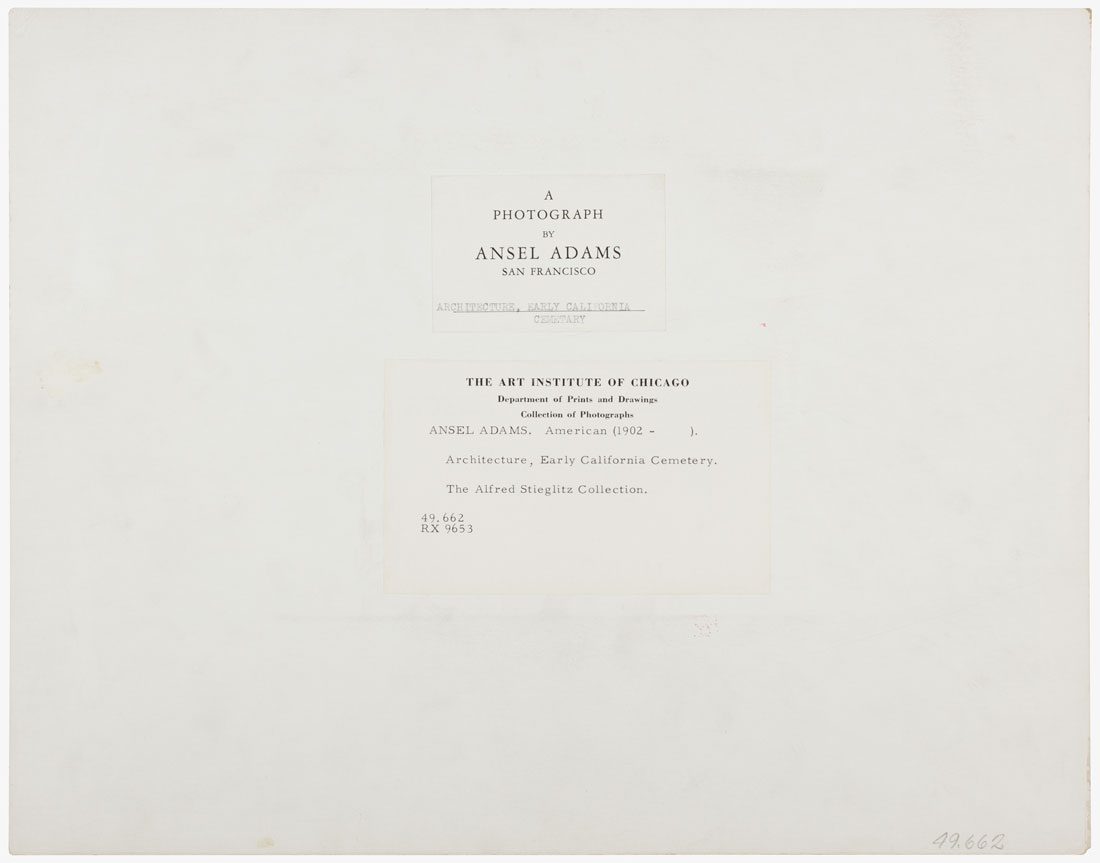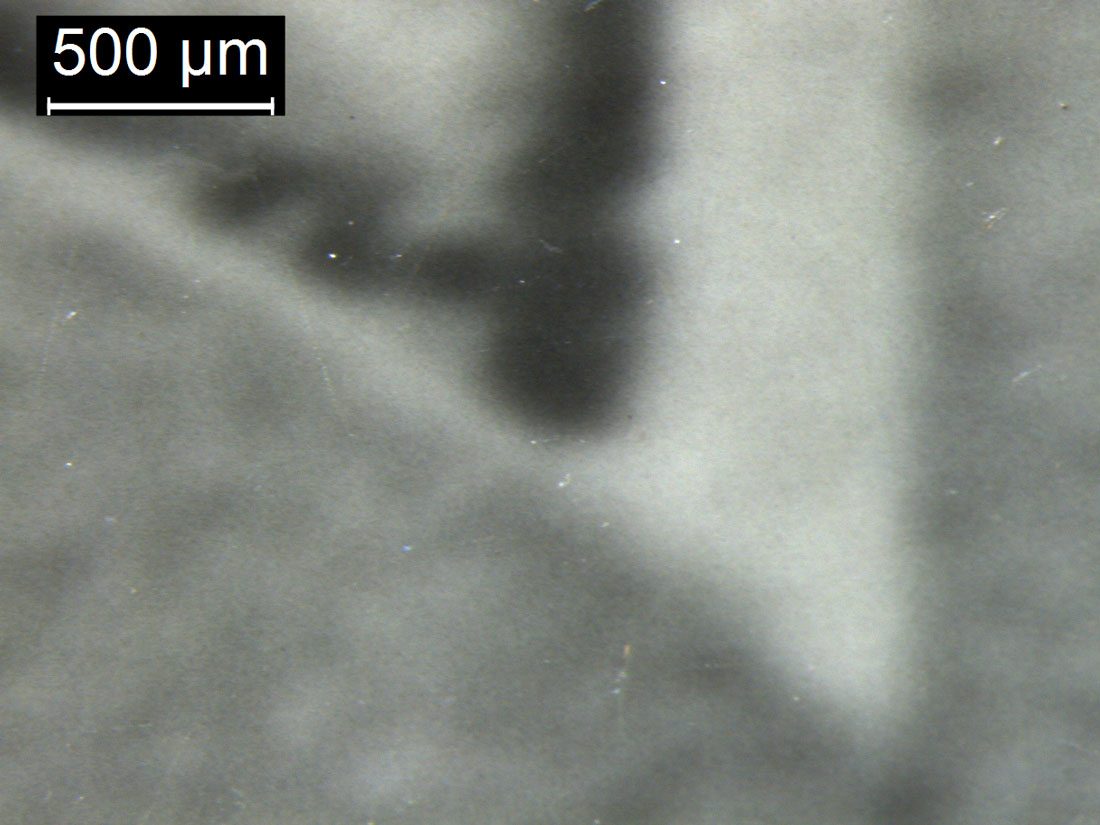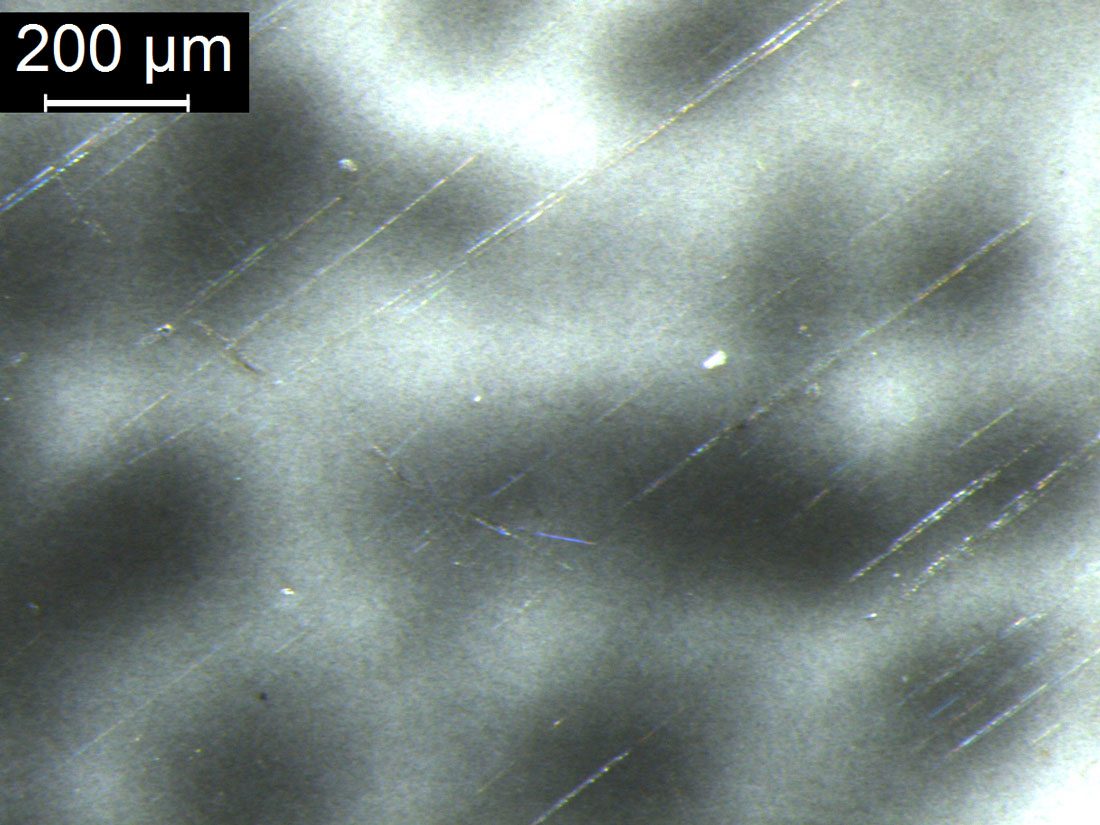Ansel Adams (American, 1902–1984)
Architecture, Early California Cemetery, 1932/36, printed 1936
Alfred Stieglitz Collection, 1949.662
© The Ansel Adams Publishing Rights Trust
Ansel Adams considered the prints he prepared for his 1936 one-man exhibition at Stieglitz’s gallery An American Place—including Architecture, Early California Cemetery—among the finest he ever made.[1] In the exhibition pamphlet he described the photographs, which he printed on glossy gelatin silver paper, as “individual experiences integrated in black and white through the simple medium of the camera.”[2] This work shows the entrance to a mausoleum in Laurel Hill Cemetery, San Francisco, and its matter-of-fact view was typical of the straight photography practiced by Group f/64, which Adams had cofounded. By reducing the image’s perspective and depth he encouraged the viewer to focus on the effects of sunlight across the planes of the building’s architecture as captured by the tonal range of a black-and-white photograph.
Additional resources related to this object are to the right. Comprehensive material analysis can be found in the Object Research PDF.
[1] Andrea Gray, Ansel Adams: An American Place, 1936 (Little, Brown, 1982), p. 22.
[2] Ansel Adams, Ansel Adams: Exhibition of Photographs, exh. brochure (An American Place, 1936), n.p.
Related Glossary Pages
Artists
Ansel Easton Adams
Ansel Adams was among the handful of younger photographers embraced by Alfred Stieglitz in the read more
Processes
Gelatin Silver Print
After being introduced in the 1870s, gelatin silver printing grew to dominate amateur and professional read more
Galleries
An American Place
At his last gallery, An American Place, Stieglitz welcomed a stream of visitors who wanted read more
Themes
Straight Photography
The term “straight photography” was popularized by critic Sadakichi Hartmann, who often wrote for Camera read more
Themes
Materials Research
As part of the research related to this site, forty-four photographs from the Art Institute’s read more
Object Research
Key Sources





